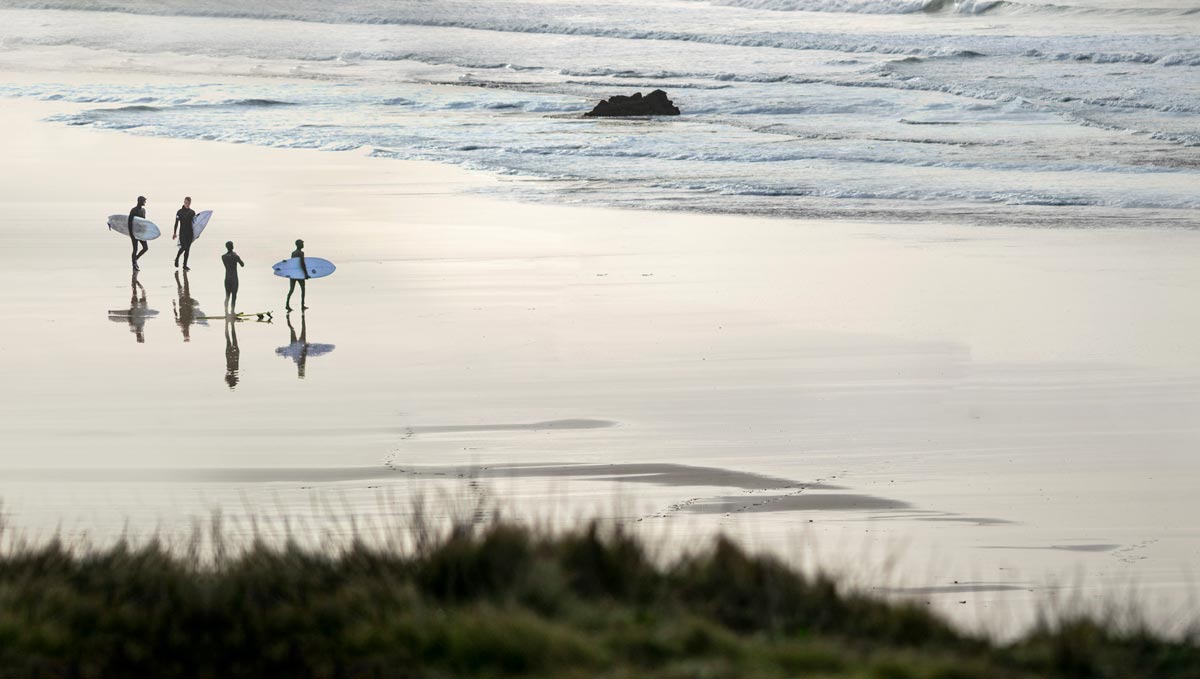You have no items in your shopping cart.
Ok so you’re thinking of taking up surfing and want to know what kind of surfboard to get your hands on? Probably the best way to start is a beginner lesson or two with a good surf school.
If you’re in the West Cornwall area, Gwithian Academy of Surfing is one of the best in Britain. At a surf school like this, instructors will be able to give you advice on surfboards as well as teaching you how to surf.
Going it Alone? Is it Worth Buying a Softboard?
If you’re planning to go it alone, softboards, in our beginners collection, might be a viable option. They’re safe, relatively inexpensive and less prone to ‘dings’ – which can cost a fortune to repair. They’re also a great ‘toy’ to have lying around in the garage for goofing around in the summer and lending out. In most circumstances however a softboard wouldn't be of much use for very long, so you'd have to ask yourself how cost-effective it would be to buy one :-/

Finding the Balance...
Your first surfboard should be big enough to provide the stability you need as a beginner - but not so big that you can't move it about a bit as your skills develop. The general rule of thumb is bigger = more stable/less manoeuvrable. An often quoted guide is that the length of your first board should be about a foot longer than you are tall. But this is only a very rough guide; body weight and agility also come into the equation, as does the shape/style of the surfboard.
For example, a 9ft ‘gun’ is very much on the long side as far as surfboards go, but also very narrow (to provide greater control for big wave surfing), and therefore not suitable for a beginner, with reduction in width inversely proportionate to stability. ‘Mals’ (short for ‘Malibu’) and Mini-mal style surfboards are the most appropriate style of board for beginners (the softboards used in beginner lessons are generally Malibu shapes).
But don’t fall into the trap of thinking “If it’s a Mal, it’s ok for learning.” There are high-performance Mals on the market that, due to features such as pronounced rocker (curvature), which will increase manoeuvrability to the detriment of paddling speed (very important for a newbie), or thin rails, which will help an experienced surfer slice through the waves whilst causing the uninitiated to ‘bog’, wouldn't be great for beginners.
Surfboard volume is increasingly being referred to as one the most, if not the most important, reference point when buying a surfboard.
Check out this volume calculator to get an idea of what volume is best for you. >
What Are Your Goals? What's Your Budget?
These are two very important considerations when buying a surfboard of any kind, let alone a beginner surfboard.
Let's look at a couple of examples...
A budding super-grom (youth ripper(shredder (good surfer))) who's naturally athletic would want a board they'd grow into, so to speak: They'd probably get the hang of things quickly so if they were to initially buy a longboard or a mini-mal they'd want to scale down pretty sharpish, perhaps even within days; a costly approach! So in this situation, unless they had loads of dosh or their dad owned a surf shop, they'd ideally get some kind of thruster, perhaps second-hand, which would, after a bit of an initial struggle, yield big rewards in terms of manoeuvrability. They'd then want to be scaling either up or down again fairly soon afterwards, depending on body growth and technical progression respectively...
Conversely, a middle-aged beginner who doesn't envisage surfing that often would probably be best off on a new, well-made longboard. They might want to downsize to a mini-mal or funboard at some point, but probably not for some time.
Types of Surfboards (Construction)
The material a board is made from is also an important consideration, affecting not only durability but also how the board feels underfoot as it glides through the waves. There are four main types:

Final Words of Advice...
Buying your first surfboard isn’t something you should rush into - surfboards, especially decent ones, aren't cheap after all.
We strongly advise buying from a well-stocked surf shop as opposed to one with only a handful of boards, for the obvious reason that you're less likely to get palmed off with something unsuitable.
Taking a surfboard-savvy friend is also highly advisable, especially when looking at used surfboards.

 Learn more.
Learn more.











